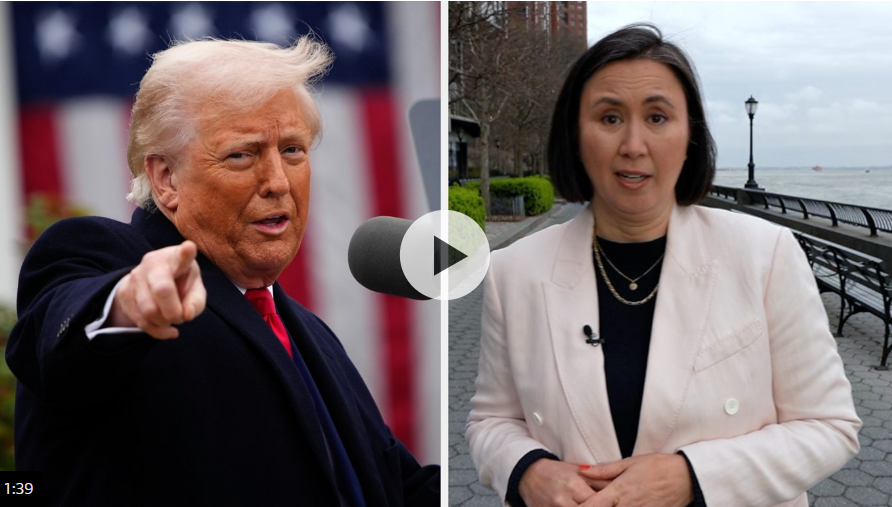
President Trump Imposes New Tariffs: Global Impact Expected from USA to Dubai
In a bold move set to shake global markets, U.S. President Donald Trump has unveiled a sweeping set of new import tariffs, aiming to protect American industries, reduce trade imbalances, and bring manufacturing jobs back to the United States.
Announced via executive order, the tariffs will go into effect in April 2025 and are expected to send significant economic ripples worldwide — especially in key trade hubs like Dubai, where international commerce and logistics play a crucial role in the regional economy.
USA’s 10% Baseline Tariff Begins April 5
According to a senior White House official, the United States will implement a 10% baseline tariff on all imports starting April 5, 2025. This across-the-board import tax is aimed at leveling the playing field for American businesses and workers.
While U.S. importers will initially absorb the cost, the broader economic impact could lead to higher consumer prices globally — including in Dubai, where U.S.-made goods and materials are widely distributed across retail, automotive, and construction sectors.
Countries affected by the base tariff include:
-
United Arab Emirates (UAE)
-
United Kingdom
-
Australia
-
Singapore
-
Brazil
-
Saudi Arabia
-
New Zealand
-
Turkey
-
Colombia
-
Argentina
-
El Salvador
With Dubai being a central trade and logistics hub in the UAE, the 10% tariff could influence trade volumes, especially in re-export industries that move American goods to broader GCC and Asian markets.
Custom Tariffs on Key Offenders: China, Japan, Vietnam & More
On April 9, the Trump administration will enforce reciprocal tariffs on approximately 60 countries identified as “worst offenders” in global trade practices. These nations have been accused of charging unfair duties on American exports or implementing non-tariff barriers that restrict U.S. trade access.
Here’s a breakdown of the targeted tariffs:
-
China: 54% (including prior tariffs)
-
Vietnam: 46%
-
Cambodia: 49%
-
Thailand: 36%
-
Japan: 24%
-
South Africa: 30%
-
Taiwan: 32%
-
European Union: 20%
These new duties are expected to reshape global supply chains, including trade routes that flow through Dubai’s Jebel Ali Port, one of the largest in the world. Businesses in Dubai involved in re-exporting products from these countries may see increased costs or logistical shifts.
No New Tariffs on Canada and Mexico
Interestingly, Canada and Mexico will be exempt from the new 10% baseline tariff. Both countries are already subject to previously implemented tariffs of 25%, introduced during Trump’s earlier presidency to combat drug trafficking and address border-related trade concerns.
Major Impact on the Auto Industry: 25% Tariff on Foreign Cars
Perhaps the most significant announcement is the introduction of a 25% tariff on all foreign-made automobiles, a move aimed at reviving U.S. automotive manufacturing. This is likely to affect luxury car imports from Germany, Japan, and South Korea — all of which are highly popular in Dubai’s luxury car market.
For Dubai’s auto dealerships and parallel importers, this could lead to price increases and limited availability of select models that are imported through U.S. suppliers.
What This Means for Dubai–USA Trade Relations
These sweeping tariff measures by the United States are a clear signal of a return to protectionist trade policies, potentially realigning the global economic landscape. For a global business hub like Dubai, which maintains strong commercial ties with the USA, the ripple effects could impact sectors such as logistics, retail, automotive, and technology.
While UAE remains on the base tariff list at 10%, its position as a neutral trade and investment gateway could offer regional businesses an opportunity to adjust strategies and explore alternate supply chains.
Conclusion: A New Era of U.S. Trade — Eyes on Dubai
As President Trump enacts a bold new economic strategy, the world is watching — and so is Dubai. From multinational corporations to local businesses that depend on U.S. imports, the impact of these tariffs will be closely monitored in the weeks and months ahead.
Stay tuned for more updates on how U.S. policy changes are reshaping trade dynamics in the Middle East, South Asia, and around the world.






